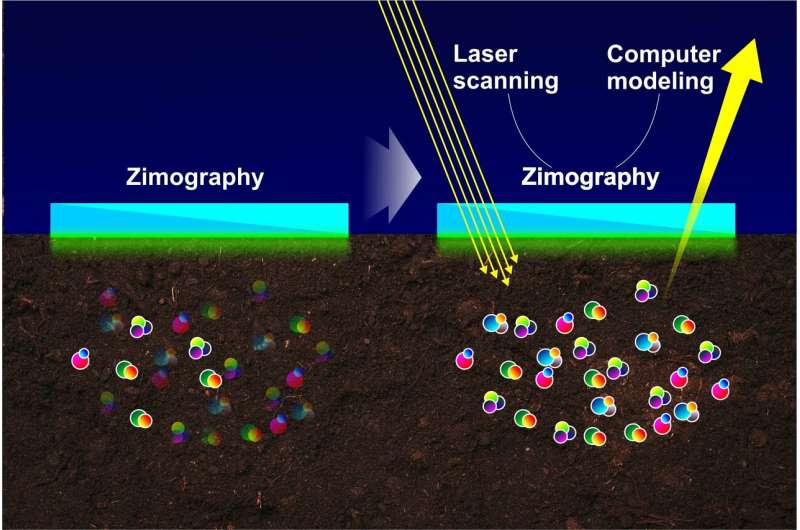Zymography shows only 20% of soil ferments—biologists report solution

RUDN pedologists improved the method of zymography used to evaluate the activity of ferments in the soil. The researchers found out that the standard method was imprecise and suggested improvements to it. The development would broaden the range of tasks that can be solved using zymography. The results of the experiments were described in Soil Biology and Biochemistry.
Zymography is a new technique in pedology to monitor the activity of ferments in the soil. To do so, a fluorescent substance that reacts to a certain ferment is put on a special membrane. After that, the membrane is placed on the surface of a soil sample, and the membrane glows at the points of contact with the ferments, forming a fluorescent pattern. Using it, the scientists make conclusions on soil ferment activity.
"Unlike traditional methods, zymography provides for non-invasive soil studies, i.e. it does not damage the soil. However, we found a number of methodological imprecisions in it and experimentally demonstrated how they can be avoided," said Yakov Kuzyakov, a co-author of the work, Ph.D. in Biology, and a research associate at RUDN.
Current zymography standards are applicable to comparative studies of ferment activity in different soils. The method works well for relative results (showing if one value is bigger or smaller than the other), however absolute values turn out to be imprecise.
The pedologists carried out 5 experiments. In the first one they found out how soil ferments diffuse into (enter) the membrane. In the second experiment they studied the process of diffusion of the fluorescent substance in the membrane and between several membranes. After that they found out if the fluorescent substance returned back to the membrane after reacting with soil ferments. The fourth experiment showed the area of contact between the membrane and the soil sample. Finally, in the fifth experiment the authors compared the results of zymography and a computer modeled study.
Based on the results of the experiments RUDN pedologists made a number of comments regarding the method of zymography. The plate registers only immobile ferments or microorganisms attached to mineral particles. This effect is caused by short exposition (the plate with the fluorescent coating is not kept in contact with soil for long).
Moreover, the precision of zymography reduces due to the diffusion of the fluorescent substance. The result of zymography is a 2-D image called a zymogram. However, diffusion processes and reactions with ferments take place in 3-D world. A zymogram provides information only about a small part of soil ferments. According to the authors, only 20 percent of ferments get to be registered.
To eliminate this imprecision, RUDN pedologists suggested using zymography in combination with laser scanning and computer modeling. Laser scanning would help evaluate the area of connection between the membrane and the soil sample, and a 3-D computer model is required to calculate the parameters of diffusion processes. According to the authors, this would make zymography results reasonable reliable.
More information: Andrey Guber et al. Quantitative soil zymography: Mechanisms, processes of substrate and enzyme diffusion in porous media, Soil Biology and Biochemistry (2018). DOI: 10.1016/j.soilbio.2018.09.030
Provided by RUDN University


















